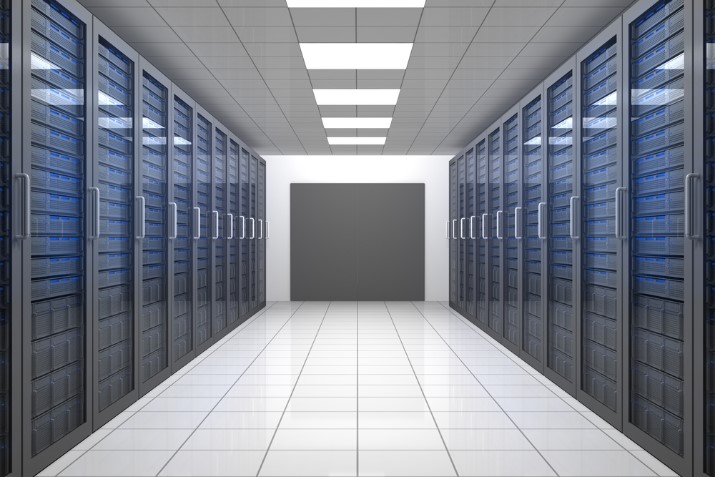4 ways to level up physical data center security
Do you know the best practices for enhancing physical security in your data center, data warehouse or server room?

Business and IT leaders pay a lot of attention to cybersecurity threats, as they’re constantly evolving. Yet, securing the physical infrastructure of your data centers, data warehouses or server rooms is equally important.
While IT departments vigorously defend against cyber threats like phishing, social engineering and malware, the risk posed by physical intrusion — whether by a stranger or an employee — can be devastating. A thief in the flesh can do just as much damage as a hacker in a hoodie thousands of miles away.
We’ve assembled a few best practices to help you boost your data center physical security.
1. Fortify entry points
It may seem elementary, but unsecured entry points are a surprisingly common oversight. Leaving keys in the door or neglecting to secure after-hours access can expose your organization to major threats.
Robust access control measures, such as electronic locks that record entry times and personnel, can dramatically reduce this risk. Ideally, you should equip every entry point with security features, including delivery and service areas.
2. Implement multi-factor authentication
As few people as possible should have regular entry and access to your data center. Stringent entry protocols are non-negotiable. One of the best methods for controlling access is to use multi-factor authentication. Online, this means at least two forms of communication, such as a text message and an email. For physical access, it includes the use of badges and biometric methods of identification like fingerprint scanners or facial recognition technology. Verifying people by unique physical traits is more secure than by what they possess or know.
3. Set up a man trap
A man trap is a small room outside the data center with one entry door to the data center and an exit door to the non-secure area. Man traps limit access by permitting one door to be unlocked and opened only after the other door has been locked and closed.
Authentication procedures can be required at either door or just at the entry to the data center. Both doors can require separate security credentials, and if access is denied at any point, alerts can trigger the data center manager or IT operations staff.
Essentially, man traps eliminate piggybacking by unauthorized individuals into secure areas. However, they are an expensive investment, so you should determine if your organization needs this extra layer of intrusion prevention.
4. Enhance surveillance and intrusion detection
Modern data centers should employ video surveillance, motion detectors and intrusion detection systems to identify and document attempts to access sensitive areas. If you don’t have security guards on duty around the clock, use the real-time alerts that are built into many of these technologies to keep tabs on activity.
AI-driven analytics could also help detect anomalous behaviors and improve your organization’s responsiveness.
Optimize data center security operations
Prioritizing data center security can mitigate serious risks, but it comes with some costs. With increased security, a data center becomes less accessible for IT users who need to make fixes or perform maintenance, and it requires more upkeep and money to ensure systems are continually protected. The physical data center security tactics that are best for your company may vary based on company size, location and number of IT staff. Balancing security with operability is a challenge for many companies, which makes data center design vital. Align updates to your data security strategy with your technology modernization efforts to ensure you protect every new investment.
Batch processing for a secure data center
One way to shore up your data center infrastructure with an extra layer of protection against security threats is to manage both on-premises and cloud assets by scheduling batch processing jobs. Whether you need to extract data from online portals, transform and load data into CRM or BI tools or complete other key jobs, a powerful workload automation solution increases efficiency and reduces downtime.
Find out why you should complement your physical security measures with an enterprise scheduling and data warehousing solution.
FAQs
What is data center security?
Data center security refers to the protective measures and protocols organizations implement to safeguard the physical and intellectual property and information stored in a data center. This is particularly important for those in industries with strict regulatory standards. With a combination of physical security solutions like surveillance cameras, man traps and biometric controls, you can prevent unauthorized access and curtail the impact of costly threats such as natural disasters.
How do you secure data in a data center?
Secure your company’s data by layering physical and cybersecurity measures. Monitor and secure all access points to buildings, floors and rooms. Digitally, use network security practices like firewalls, anti-malware and encryption to mitigate vulnerabilities. Effective security also involves updated employee access control policies and ongoing employee training.
What is automation in a data center?
Data center automation is the use of technology to manage and operate the center’s services with minimal human intervention. You might choose to automate tasks like server provisioning, incident response, network configuration and system updates. Automation tools can improve operational efficiency, maintain uptime and reduce the likelihood of human error.
What is data center security in IT infrastructure?
This is a critical component of data protection. IT infrastructure is the foundation for business operations, so having confidence in its security is a must. All physical and software-based resources within a data center and the network infrastructure should be secure at all times.







